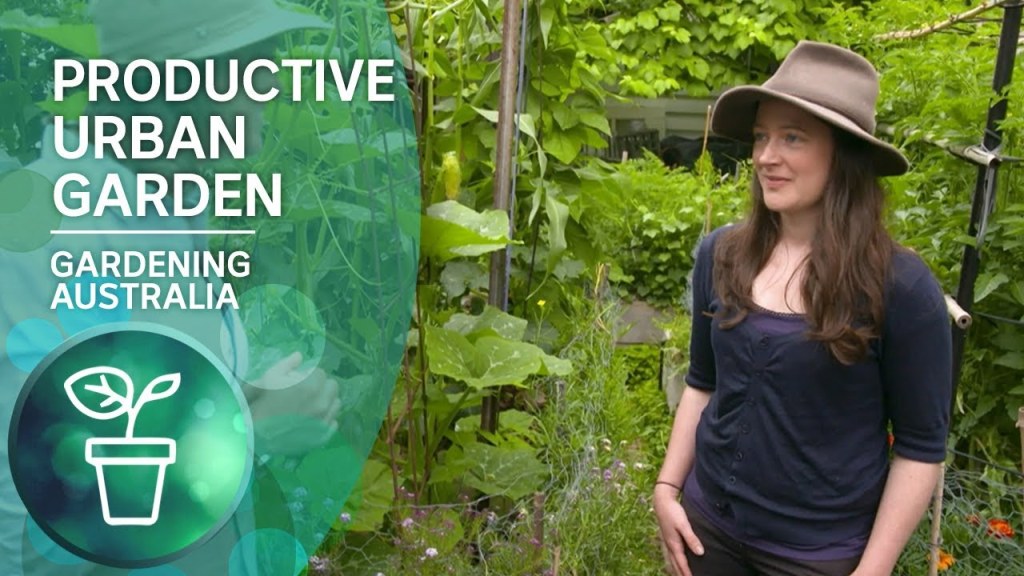Transform Your Space With Urban Gardening Australia – Unleash Nature’s Beauty In Your Urban Oasis!
Urban Gardening Australia: Cultivating Green Spaces in the Urban Jungle
Introduction
Dear Readers,
1 Picture Gallery: Transform Your Space With Urban Gardening Australia – Unleash Nature’s Beauty In Your Urban Oasis!

Welcome to our comprehensive guide on urban gardening in Australia! In this article, we will delve into the fascinating world of cultivating green spaces in the midst of bustling cities. With the rapid urbanization and shrinking outdoor areas, urban gardening provides a solution for individuals and communities to reconnect with nature, promote sustainability, and enhance the overall well-being of urban dwellers.

Image Source: ytimg.com
Throughout this article, we will explore the what, who, when, where, why, and how of urban gardening in Australia. We will also discuss the advantages and disadvantages of this practice, address frequently asked questions, and provide a conclusion that will inspire you to take action and join the urban gardening movement.
What is Urban Gardening Australia?
Urban gardening refers to the practice of growing plants, fruits, vegetables, and herbs in urban areas such as homes, balconies, rooftops, community gardens, and even public spaces. In Australia, urban gardening has gained popularity as a means to combat food insecurity, promote sustainable living, and create vibrant green spaces within cities.
🌱 Urban gardening offers a sustainable way to produce fresh and organic food in urban areas, reducing dependence on imported produce and minimizing carbon footprints.
Who Can Participate in Urban Gardening?
Anyone with a passion for gardening and a desire to connect with nature can participate in urban gardening. It is an inclusive activity that can be enjoyed by people of all ages and backgrounds, whether you have a sprawling backyard or a small balcony.
👪 Urban gardening provides an opportunity for families to bond over a shared hobby, for individuals to find solace amidst the hustle and bustle of city life, and for communities to come together and create green spaces that foster a sense of belonging.
When to Start Urban Gardening?
Urban gardening can be enjoyed year-round in Australia, thanks to its diverse climate. The best time to start depends on the specific plants you wish to grow and the region you are in. Generally, spring and autumn are considered ideal seasons for planting a wide range of crops.
🌞 Starting your urban garden in spring allows for a longer growing season and an abundant harvest, while autumn planting can result in a bountiful yield before winter sets in.
Where to Practice Urban Gardening?
Urban gardening can be practiced in various settings, depending on the available space and the desired level of involvement. It can be as simple as growing herbs in pots on a balcony or as elaborate as transforming vacant lots into thriving community gardens.
🏙️ Rooftops, balconies, windowsills, and even vertical walls can be transformed into lush gardens, adding greenery to the urban landscape and improving air quality in the process.
Why Should You Engage in Urban Gardening?
The benefits of urban gardening are vast and encompass environmental, social, and personal advantages. By engaging in urban gardening, you can:
🌿 Contribute to a greener environment by reducing carbon emissions and promoting biodiversity.
🌱 Enjoy fresh, nutritious, and pesticide-free produce right at your doorstep.
🌻 Create a sense of community by participating in local gardening initiatives and sharing knowledge and resources with fellow gardeners.
🌍 Reduce your ecological footprint and contribute to sustainable living practices.
How to Start Urban Gardening?
Starting your own urban garden requires careful planning and consideration. Here are the steps to get you started:
🌱 Assess your available space and determine the type of garden that suits your needs, whether it be vertical gardening, container gardening, or raised beds.
🌿 Select the plants that thrive in your climate and consider factors such as sunlight, water requirements, and soil quality.
🛠️ Gather the necessary tools and materials, which may include pots, soil, compost, seeds, and gardening tools.
🏡 Prepare your space by clearing any debris, ensuring proper drainage, and setting up irrigation systems if needed.
🌱 Plant your chosen crops, following planting guidelines and providing proper care, including watering, fertilizing, and pest control.
🌻 Regularly monitor the progress of your garden, make adjustments as needed, and enjoy the fruits of your labor!
Advantages and Disadvantages of Urban Gardening Australia
Like any other practice, urban gardening has its advantages and disadvantages. Let’s explore both sides:
Advantages:
1. 🌿 Improved Food Security: Urban gardening allows individuals and communities to produce their own food, reducing dependence on external food sources and ensuring access to fresh, nutritious produce.
2. 🌱 Environmental Sustainability: By growing food locally, urban gardening reduces the carbon emissions associated with transportation, promotes biodiversity, and encourages sustainable gardening practices that minimize waste and chemical use.
3. 🌻 Health and Well-being: Engaging in gardening activities has been shown to have numerous physical and mental health benefits, including stress reduction, increased physical activity, and improved overall well-being.
4. 🏙️ Community Building: Urban gardens provide a space for communities to come together, share knowledge and resources, and foster a sense of belonging and social cohesion.
5. 🌍 Education and Skill Development: Urban gardening offers opportunities for learning about sustainable practices, plant life cycles, and the importance of environmental stewardship. It also develops valuable skills such as problem-solving, teamwork, and self-reliance.
Disadvantages:
1. 🌿 Limited Space: The availability of space can be a challenge in densely populated urban areas, limiting the size and scope of urban gardens.
2. 🌱 Resource Intensity: Urban gardening requires access to resources such as water, soil, and sunlight, which may be limited in certain urban environments.
3. 🌻 Time and Effort: Maintaining an urban garden requires consistent care, time, and effort, which may be a deterrent for individuals with busy lifestyles.
4. 🏙️ Potential Contaminants: Urban gardens may be exposed to air and soil pollutants, requiring extra precautions to ensure the safety of the harvested produce.
5. 🌍 Skill and Knowledge Gap: Successful urban gardening requires expertise in gardening techniques, plant selection, and pest management. Lack of knowledge and experience may hinder the productivity of the garden.
Frequently Asked Questions (FAQs)
1. 💡 Is urban gardening suitable for apartment living?
Yes, urban gardening can be adapted to apartment living by utilizing vertical gardening techniques, balcony gardens, or indoor plants.
2. 💡 How much time does urban gardening require?
The time required for urban gardening depends on the scale of your garden and the crops you choose to grow. However, dedicating a few hours each week for maintenance is generally sufficient.
3. 💡 Can I grow vegetables and fruits in an urban garden?
Absolutely! Urban gardens are perfect for growing a variety of vegetables and fruits, from leafy greens to tomatoes, peppers, and herbs.
4. 💡 What are the common pests and diseases in urban gardening?
Common pests in urban gardening include aphids, snails, and caterpillars. Diseases such as powdery mildew and fungal infections can also affect plants. Proper pest management and regular monitoring can help mitigate these issues.
5. 💡 Are there any government initiatives or programs supporting urban gardening in Australia?
Yes, various government initiatives and programs exist to support urban gardening in Australia. Local councils often provide resources, grants, and community garden spaces to encourage urban gardening.
Conclusion
In conclusion, urban gardening in Australia offers a multitude of benefits for individuals, communities, and the environment. By engaging in this practice, you can reconnect with nature, promote sustainability, and enjoy the rewards of growing your own fresh produce. Whether you have a small balcony or access to a community garden, there is always a way to embark on this green journey.
So why wait? Start your urban garden today and join the thriving urban gardening community in Australia!
Warm regards,
Your friends at Urban Gardening Australia
Final Remarks
Disclaimer: The information provided in this article is for educational purposes only. Before engaging in any gardening activities, please research and adhere to local regulations, as well as best practices for sustainability and safety. Urban Gardening Australia is not responsible for any liabilities or damages that may arise from the implementation of the information presented in this article.
This post topic: Gardens

